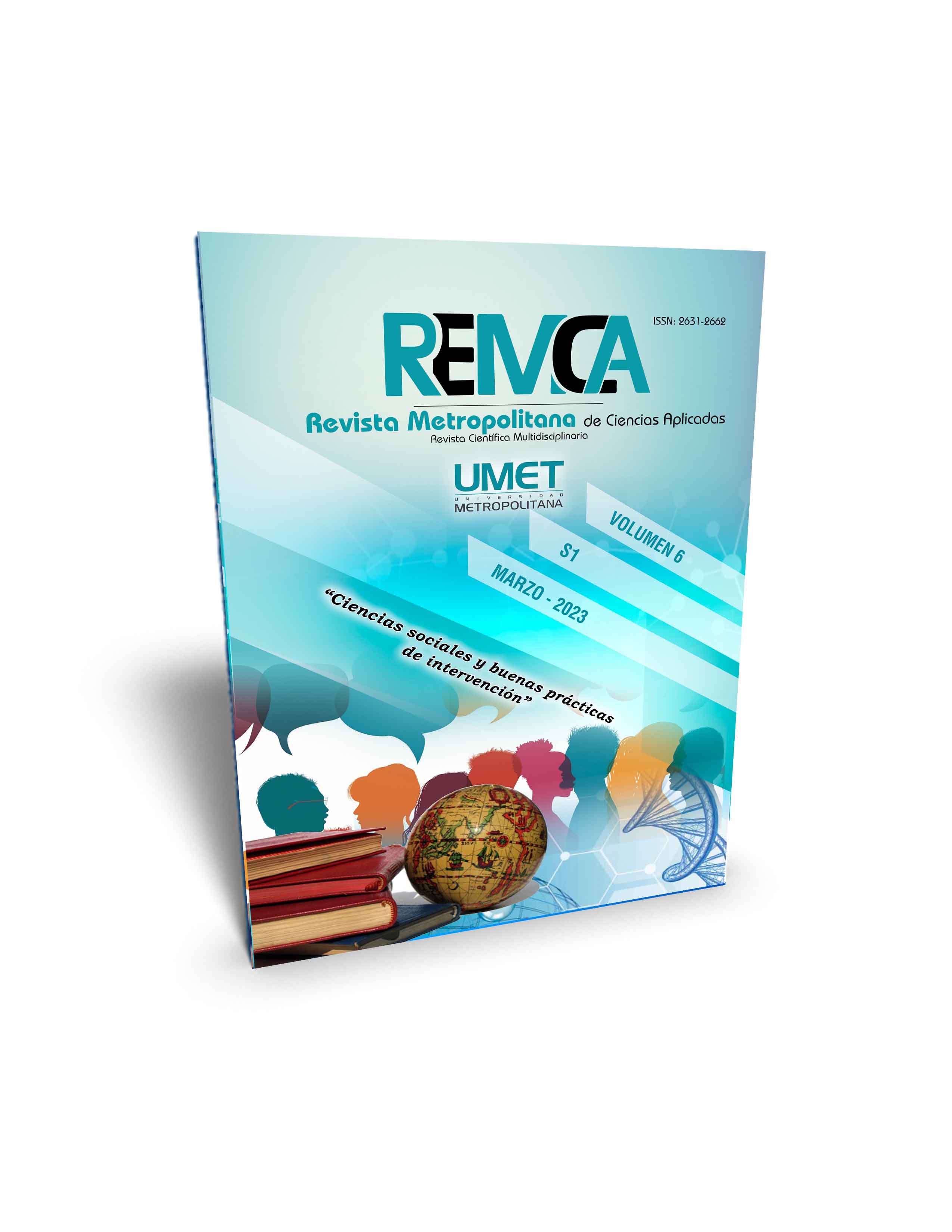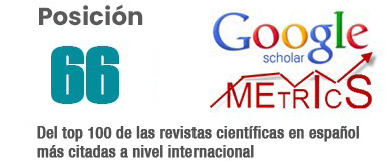Consideraciones radiográficas para la colocación de mini-implantes
DOI:
https://doi.org/10.62452/cf1vhn93Palabras clave:
Miniimplantes, tomografía, radiografía dentalResumen
El anclaje esquelético dentro del campo de la Ortodoncia se ha vuelto indispensable en los últimos años, mismo que permite mayores oportunidades en la mecánica del tratamiento; sin embargo, son diversas las consideraciones radiográficas que se han publicado para el posicionamiento de minitornillos en los maxilares, esto se debería a diversos criterios y métodos que usan los investigadores, además, existen diversas tendencias radiográficas que permitirían establecer el punto de inserción ideal para la colocación de los miniimplantes. La literatura se seleccionó mediante una búsqueda en las bases de datos electrónicas: Pubmed, Google Academic, Springer, Taylor & Francis, Web of Science y Cochrane, ésta se restringió a artículos con inclusión de todos los idiomas y publicados sin límite de temporalidad. Se obtuvieron 286 artículos acerca del tema, posterioremente luego de aplicar los filtros de inclusión y exclusión se obtuvieron y revisaron 16 artículos para el desarrollo de la presente revisión. La literatura disponible reveló que las tomografías son el gold estándar en comparación con las radiografías periapicales, oclusales y panorámicas para la evaluación y diagnóstico de la colocación de los miniimplantes. Sin embargo, si no se cuenta con tomografía de dosis bajas, lo ideal entonces sería la colocación del minitornillo siguiendo la anatomía ósea/dentaria y posteriormente la toma de una única imagen radiográfica periapical o panorámica posterior a la colocación de un minitornillo, misma que permita observar posibles lesiones por la maniobra realizada.
Descargas
Referencias
Aguilar, A., García, D., & Quizhpe, A. (2020). Anclaje con microimplantes en tratamientos ortodonticos: Artículo de revisión bibliográfica. Revista Latinoamericana de Ortodoncia y Odontopediatria. https://www.ortodoncia.ws/publicaciones/2020/art-70/
Aguirre Ochoa, C. A., Trelles Méndez, J. A., Carrión Sarmiento, M. V., Zapata Hidalgo, C. D., & Ramos Montiel, R. R. (2021). Correlación cefalométrica de rama y cuerpo mandibular en adultos jóvenes andinos, año 2019. Universidad Y Sociedad, 13(5), 456-462.
Al Maaitah, E. F., Safi, A. A. M., & Abdelhafez, R. S. (2012). Alveolar bone density changes around miniscrews: A prospective clinical study. American Journal of Orthodontics and Dentofacial Orthopedics, 142(6), 758–767.
An, J. H., Kim, Y. il, Kim, S. S., Park, S. B., Son, W. S., & Kim, S. H. (2019). Root proximity of miniscrews at a variety of maxillary and mandibular buccal sites: Reliability of panoramic radiography. Angle Orthodontist, 89(4), 611–616.
Bae, S.-M., Park, H.-S., Kyung, H.-M., & Kwon, O.-W. (2002). Clinical application of micro-implant anchorage. Journal of Clinical Orthodontics, 36(5), 298–302.
Benavides Chaverri, S., Cruz López, P., & Chang Valverde, M. (2019). Microimplantes, una nueva opción en el tratamiento de Ortodoncia. Odontovital, 2(25), 65–77.
Bustos-Bravo, A., & Ramos-Montiel, R. (2022). Correlación tomográfica de la distancia transversal maxilar y la inclinación de molares permanentes superiores en adultos clase I esqueletal. Polo del Conocimiento, 7(4).
Cavalcante, S., Janson, G., Chiqueto, K., De Freitas, M., Castanha, J., & Pinzan, A. (2006). A three-dimensional radiographic-surgical guide for mini-implant placement - PubMed. Journal of Clinical Orthodontics, 40(9), 548–554.
Cavalcante, S., Janson, G., Chiqueto, K., De Freitas, M.m (2009). Predictable drill-free screw positioning with a graduated 3-dimensional radiographic-surgical guide: A preliminary report. American Journal of Orthodontics and Dentofacial Orthopedics, 136(5), 722–735.
Chugh, T., Jain, A. K., Jaiswal, R. K., Mehrotra, P., & Mehrotra, R. (2013). Bone density and its importance in orthodontics. Journal of Oral Biology and Craniofacial Research, 3(2), 92–97.
Cobos-Torres, J. C., Ramos, R., Ortega Castro, J. C., & Ortega Lopez, M. F. (2020). Hearing Loss and Its Association with Clinical Practice at Dental University Students Through Mobile APP: A Longitudinal Study. Advances in Intelligent Systems and Computing, 1099, 3–17.
Dasari, A. K., Parimi, S., Kishore, M. S. V., Shashidhar, N. R., & Dharmender, S. R. (2014). A simple 2D accurate mini-implant positioning guide. Journal of Clinical and Diagnostic Research, 8(7), 3–4.
Epistatu, D., Dumitru, I., & Pascuto, I. (2008). A study of interpreting bone density on panoramic X-Rays. Proceedings of the Romanian Academy, (1-2), 43–48.
Güler, Ö. Ç., & Malkoç, S. (2019). Effects of orthodontic force on root surface damage caused by contact with temporary anchorage devices and on the repair process. Korean Journal of Orthodontics, 49(2), 106–115.
Gurdan, Z., & Szalma, J. (2018). Evaluation of the success and complication rates of self-drilling orthodontic mini-implants. Nigerian Journal of Clinical Practice, 21(5), 546–552.
Horliana, R. F., Ratto Tempestino Horliana, A. C., Do Vale Wuo, A., Guilin Perez, F. E., & Abrão, J. (2015). Dental extrusion with orthodontic miniscrew anchorage: A case report describing a modified method. Case Reports in Dentistry, 2015.
Izurieta-Galarza, P. F., Ramos-Montiel, R. R., & Reinoso-Quezada, S. (2022). Cirugía de avance maxilo-mandibular como tratamiento alternativo del Apnea Obstructiva del Sueño: Revisión de Literatura. Odontología Activa Revista Científica, 7(Esp.), 9–18.
Janson, G., Gigliotti, M. P., Estelita, S., & Chiqueto, K. (2013). Influence of miniscrew dental root proximity on its degree of late stability. International Journal of Oral and Maxillofacial Surgery, 42(4), 527–534.
Kaci, N., Hakem, K., Laraba, S., Benrekaa, N., & le Gall, M. (2018). Micrographic study and torsional strength of grade 23 titanium mini-implants recycled for orthodontic purposes. International Orthodontics, 16(2), 246–257.
Kim, H. J., Yun, H. S., Park, H. do, Kim, D. H., & Park, Y. C. (2006). Soft-tissue and cortical-bone thickness at orthodontic implant sites. American Journal of Orthodontics and Dentofacial Orthopedics: Official Publication of the American Association of Orthodontists, Its Constituent Societies, and the American Board of Orthodontics, 1(2), 43–48.
Kim, S. H., Choi, Y. S., Hwang, E. H., Chung, K. R., Kook, Y. A., & Nelson, G. (2007). Surgical positioning of orthodontic mini-implants with guides fabricated on models replicated with cone-beam computed tomography. American Journal of Orthodontics and Dentofacial Orthopedics : Official Publication of the American Association of Orthodontists, Its Constituent Societies, and the American Board of Orthodontics, 131(4 Suppl).
Kitai, N., Yasuda, Y., & Takada, K. (2002). A stent fabricated on a selectively colored stereolithographic model for placement of orthodontic mini-implants. The International Journal of Adult Orthodontics and Orthognathic Surgery, 17(4), 264–266.
Lee, J. S., Kook, K. J., Park, Y.-C., & Vanarsdall, R. (2007). Applications of orthodontic mini implants (1st ed.). Quintessence Pub. Co.
Lee, Y. K., Kim, J. W., Baek, S. H., Kim, T. W., & Chang, Y. il. (2010). Root and bone response to the proximity of a mini-implant under orthodontic loading. Angle Orthodontist, 80(3), 452–458.
Liou, E. J. W., Pai, B. C. J., & Lin, J. C. Y. (2004). Do miniscrews remain stationary under orthodontic forces? American Journal of Orthodontics and Dentofacial Orthopedics, 126(1), 42–47.
Ludwig, B., Glasl, B., Lietz, T., & Kopp, S. (2008). Röntgenologische Lagekontrolle bei der skelettalen Verankerung: Vorstellung einer Positionierungshilfe. Journal of Orofacial Orthopedics, 69(1), 59–65.
Martins de Araújo, T., Andrade Nascimento, M. H., Bezerra, F., & Costa Sobral, M. (2006). Ancoragem esquelética em Ortodontia com miniimplantes. Revista Dental Press de Ortodontia e Ortopedia Facial, 11(4), 126–156.
Matzenbacher, L., Sérgio, P., Campos, F., Pena, N., & Martins De Araújo, T. (2008). Evaluation of radiographic methods used in vertical location of sites elected for installation of mini-implants. Revista Dental Press de Ortodontia e Ortopedia Facial, 5, 95–106.
Meursinge Reynders, R., Ladu, L., Ronchi, L., Di Girolamo, N., de Lange, J., Roberts, N., & Plüddemann, A. (2016). Insertion torque recordings for the diagnosis of contact between orthodontic mini-implants and dental roots: A systematic review. Systematic Reviews, 5(1).
Oré De La Cruz, J., Núñez Villalva, J., Vega Quiñones, M., & Bravo Castagnola, F. (2006). Guía radiográfica y quirúrgica para la colocación de microtornillos ortodoncicos. Reporte de caso. Odontología Sanmarquina, 9(2), 35–37.
Paik, C.-H., Park, I.-K., Woo, Y. J., & Kim, T.-W. (2009). Anatomic considerations and placement/removal of orthodontic miniscrew implants. Orthodontic Miniscrew Implants, 33–57.
Pérez, L., & Garmas, Y. (2011). Mini implantes, una opción para el anclaje en Ortodoncia. Sumario Gaceta Médica Espirituana, 13(3).
Prabhu, J., & Cousley, R. R. J. (2006). Current products and practice: Bone anchorage devices in orthodontics. Journal of Orthodontics, 33(4), 288–307.
Ramos Montiel, R., Puebla-Ramos, L., Ribadeneira-Morales, L., Guerra-Mendoza, Y., & Sáenz-López, N. (2021). Relationship between Intermolar Width and Tooth-Bone Discrepancy in Children: A Cross-Sectional Study. Int J Cur Res Rev, 13(18).
Ramos, R., Urgiles, C., & Jara, F. (2018). Aspectos metodológicos de la investigación. Aspectos Metodológicos de La Investigación, 2(3), 194–211.
Romano, F. L., & Consolaro, A. (2015). Why are mini-implants lost: ¡The value of the implantation technique! Dental Press Journal of Orthodontics, 20(1), 23–29.
Sarul, M., Minch, L., Park, H. S., & Antoszewska-Smith, J. (2015). Effect of the length of orthodontic mini-screw implants on their long-term stability: A prospective study. Angle Orthodontist, 85(1), 33–38.
Schätzle, M., Männchen, R., Zwahlen, M., & Lang, N. P. (2009). Survival and failure rates of orthodontic temporary anchorage devices: A systematic review. Clinical Oral Implants Research, 20(12), 1351–1359.
Schnelle, M. A., Beck, F. M., Jaynes, R. M., & Huja, S. S. (2004). A Radiographic Evaluation of the Availability of Bone for Placement of Miniscrews. Angle Orthodontist, 74(6), 832.
Shinohara, A., Motoyoshi, M., Uchida, Y., & Shimizu, N. (2013a). Root proximity and inclination of orthodontic mini-implants after placement: cone-beam computed tomography evaluation. American Journal of Orthodontics and Dentofacial Orthopedics: Official Publication of the American Association of Orthodontists, Its Constituent Societies, and the American Board of Orthodontics, 144(1), 50–56.
Shyagali, T., Dungarwal, N., & Prakash, A. (2012). A new stent for miniscrew implant placement. Orthodontic Waves, 71(4), 134–137.
Vicioni-Marques, F., Pimentel, D. J. B., Matsumoto, M. A. N., Stuani, M. B. S., & Romano, F. L. (2022). Orthodontic mini-implants: clinical and peri-implant evaluation. Journal of the World Federation of Orthodontists, 11(1), 22–28.
Descargas
Publicado
Número
Sección
Licencia
Derechos de autor 2023 María Fernanda León-Puzma, Christian David Zapata-Hidalgo (Autor/a)

Esta obra está bajo una licencia internacional Creative Commons Atribución-NoComercial-CompartirIgual 4.0.
Los autores que publican en la Revista Metropolitana de Ciencias Aplicadas (REMCA), están de acuerdo con los siguientes términos:
1. Derechos de Autor
Los autores conservan los derechos de autor sobre sus trabajos sin restricciones. Los autores otorgan a la revista el derecho de primera publicación. Para ello, ceden a la revista, de forma no exclusiva, los derechos de explotación (reproducción, distribución, comunicación pública y transformación). Los autores pueden establecer otros acuerdos adicionales para la distribución no exclusiva de la versión de la obra publicada en la revista, siempre que exista un reconocimiento de su publicación inicial en esta revista.
© Los autores.
2. Licencia
Los trabajos se publican en la revista bajo la licencia de Atribución-NoComercial-CompartirIgual 4.0 Internacional de Creative Commons (CC BY-NC-SA 4.0). Los términos se pueden consultar en: https://creativecommons.org/licenses/by-nc-sa/4.0/deed.es
Esta licencia permite:
- Compartir: copiar y redistribuir el material en cualquier medio o formato.
- Adaptar: remezclar, transformar y crear a partir del material.
Bajo los siguientes términos:
- Atribución: ha de reconocer la autoría de manera apropiada, proporcionar un enlace a la licencia e indicar si se ha hecho algún cambio. Puede hacerlo de cualquier manera razonable, pero no de forma tal que sugiera que el licenciador le da soporte o patrocina el uso que se hace.
- NoComercial: no puede utilizar el material para finalidades comerciales.
- CompartirIgual: si remezcla, transforma o crea a partir del material, debe difundir su creación con la misma licencia que la obra original.
No hay restricciones adicionales. No puede aplicar términos legales ni medidas tecnológicas que restrinjan legalmente a otros hacer cualquier cosa que la licencia permita.




